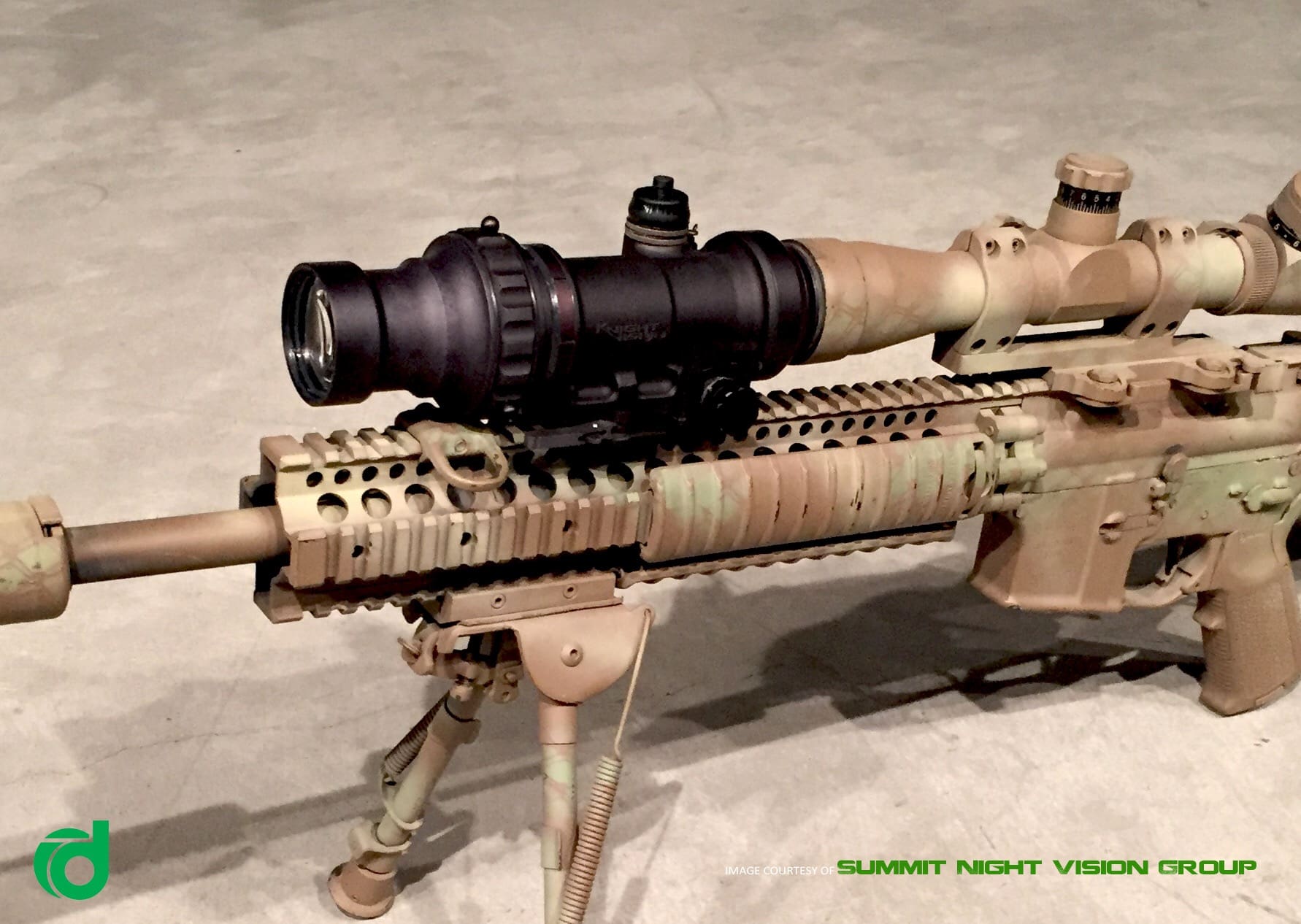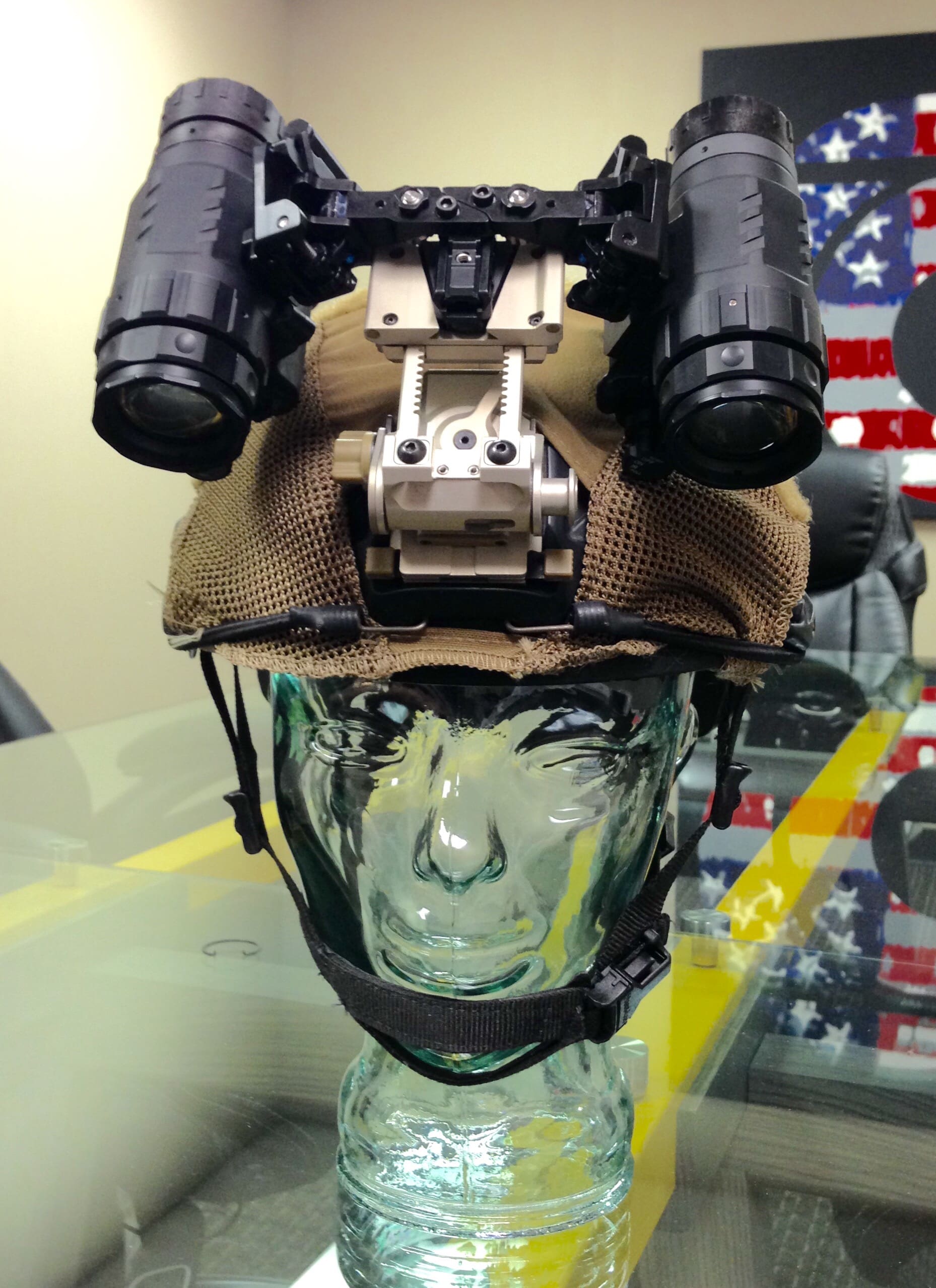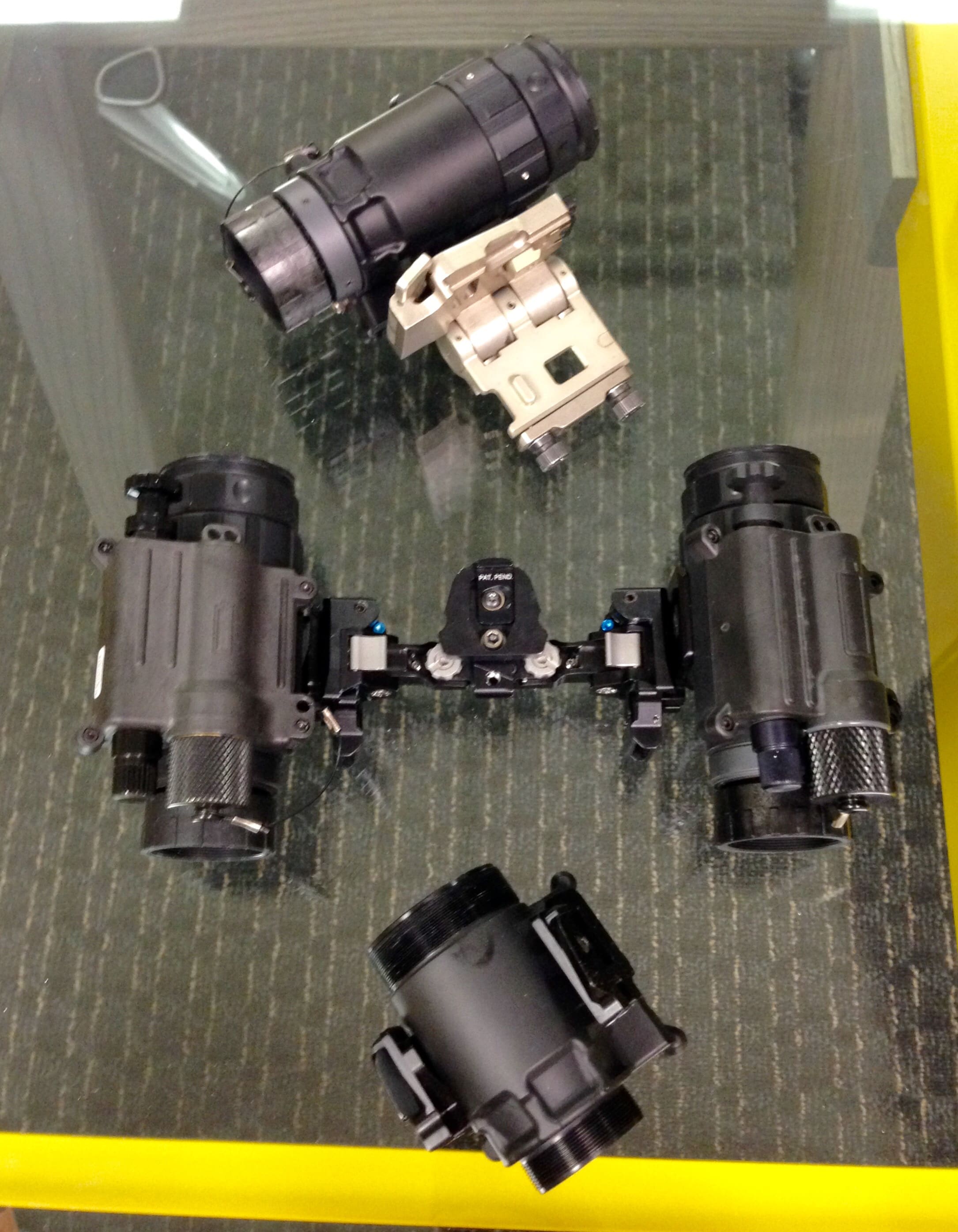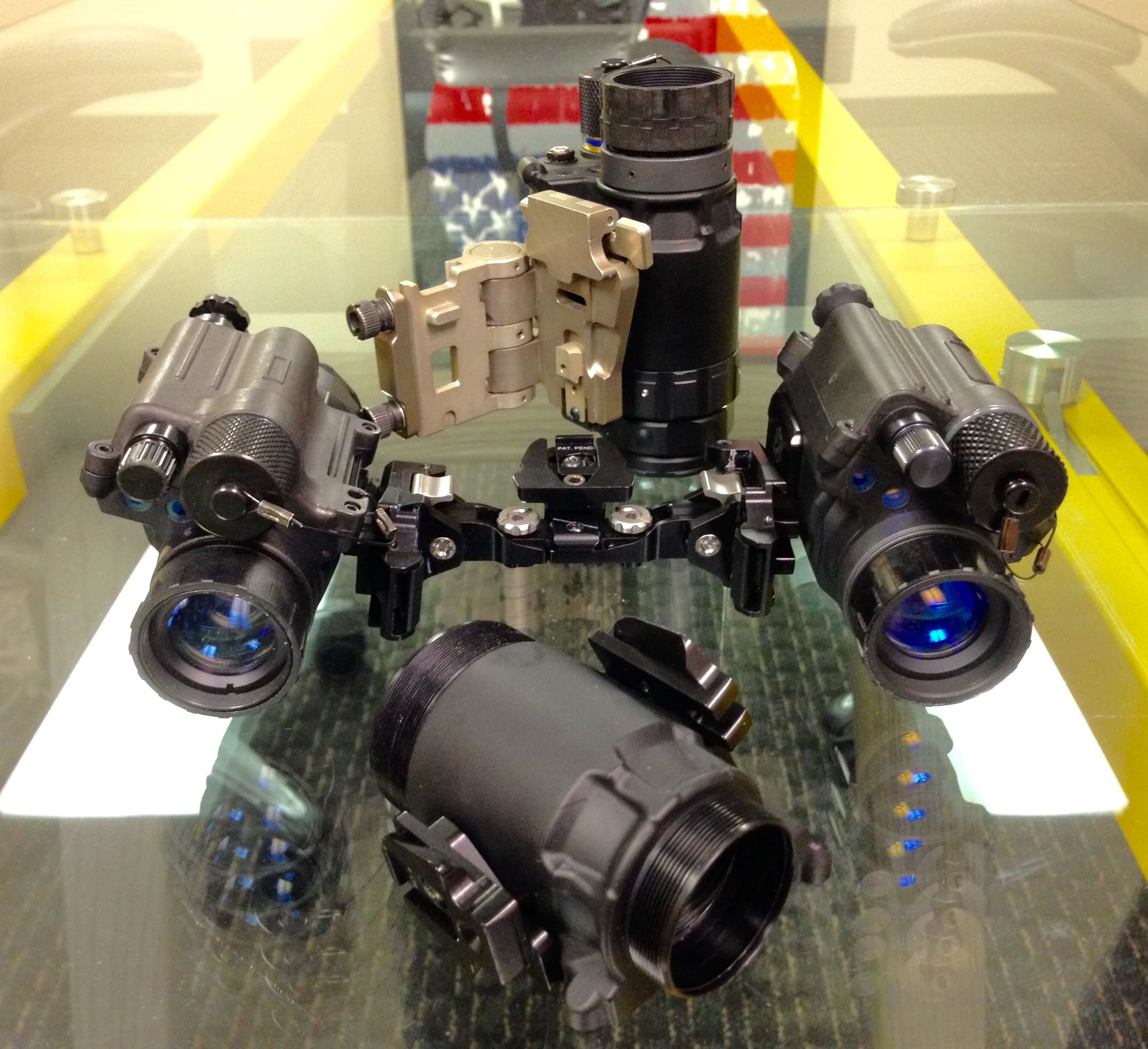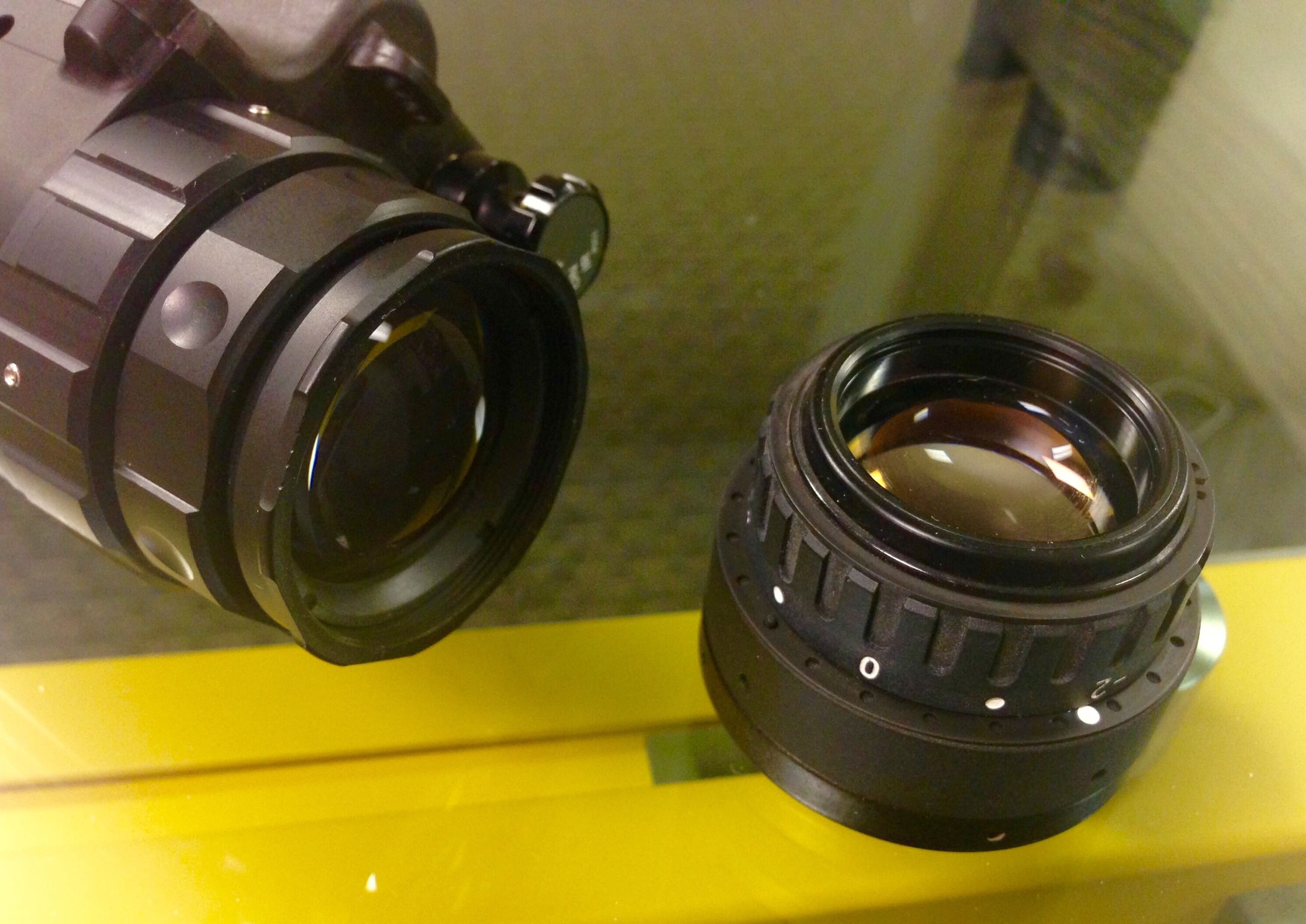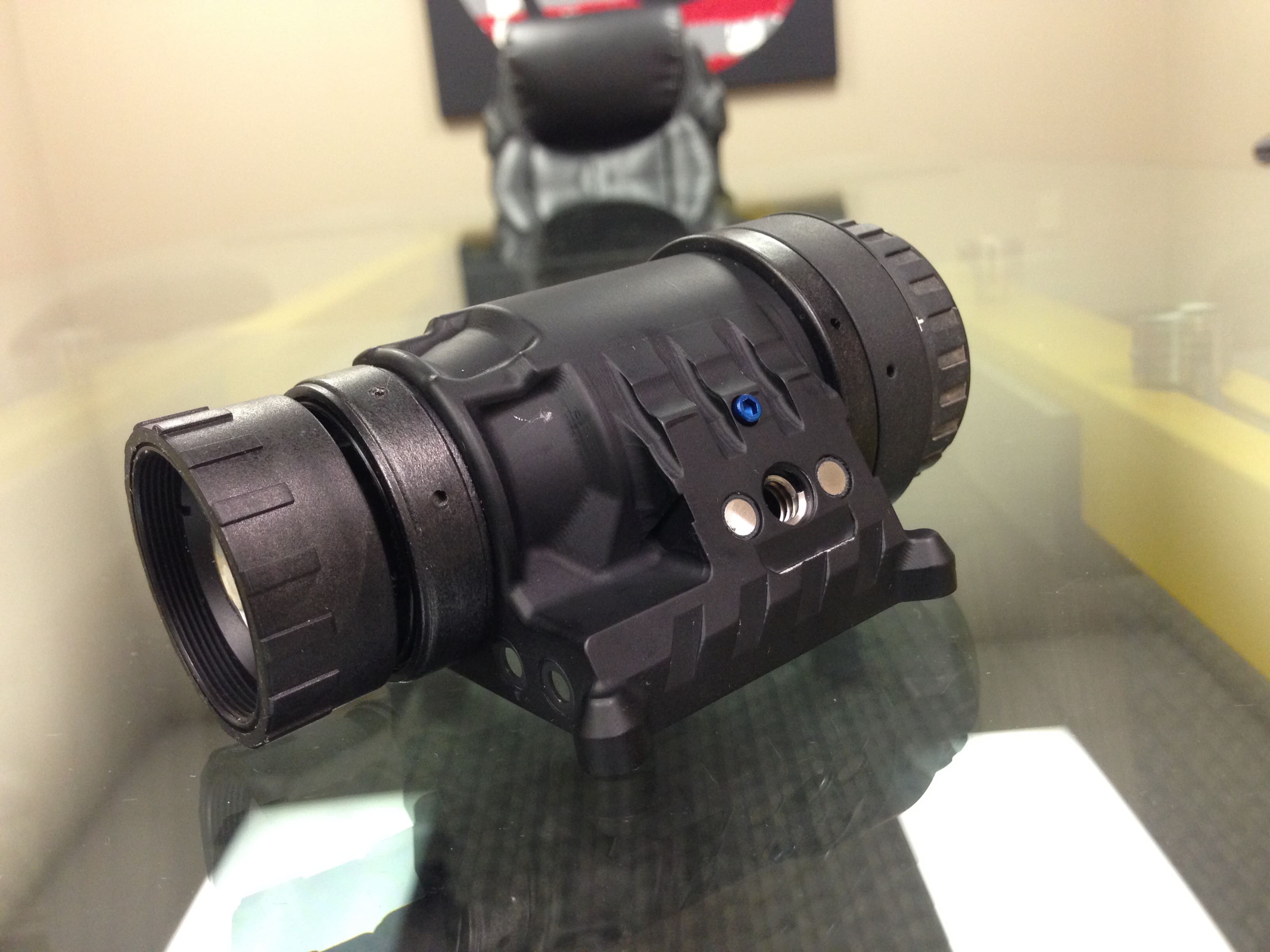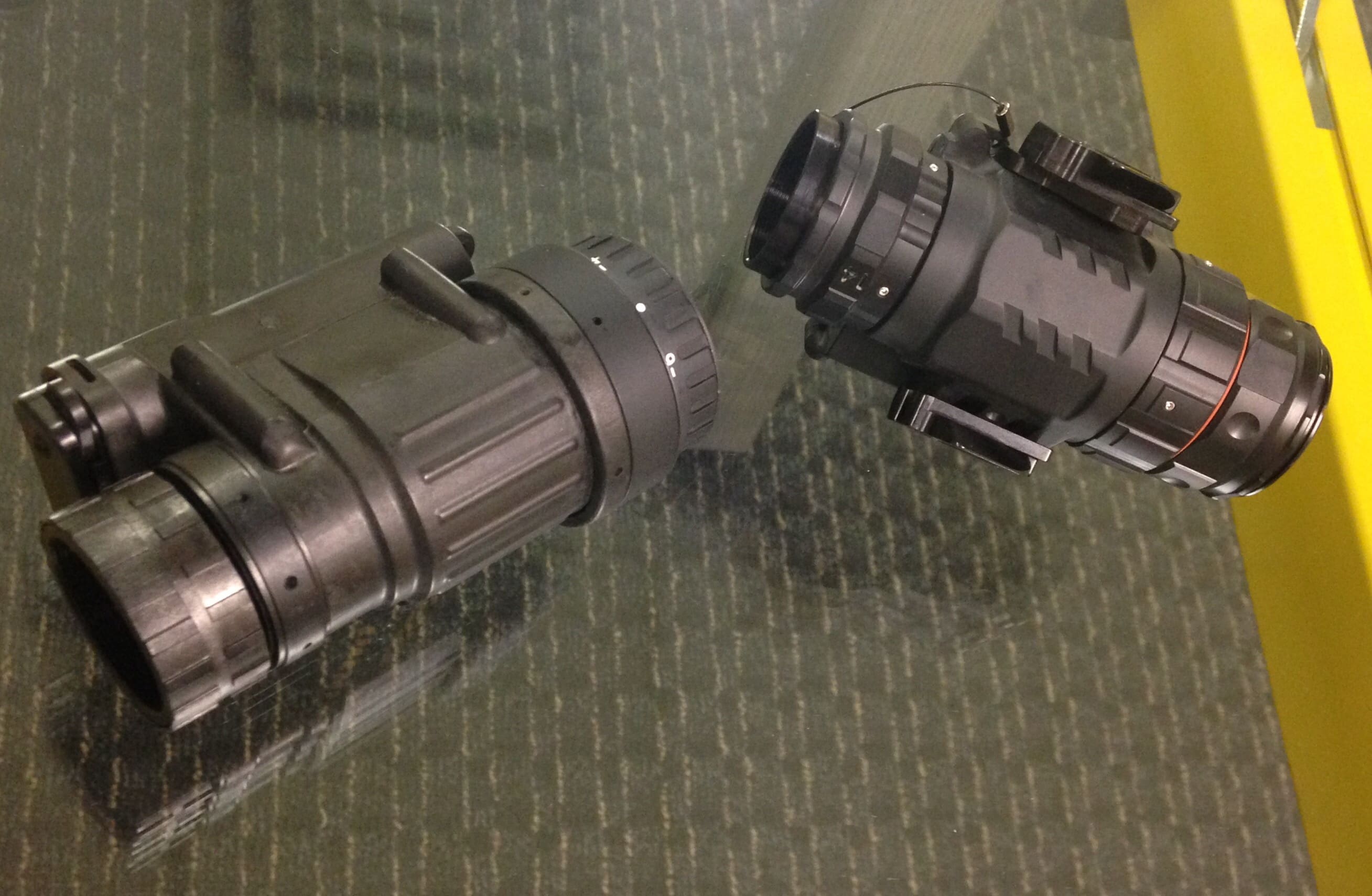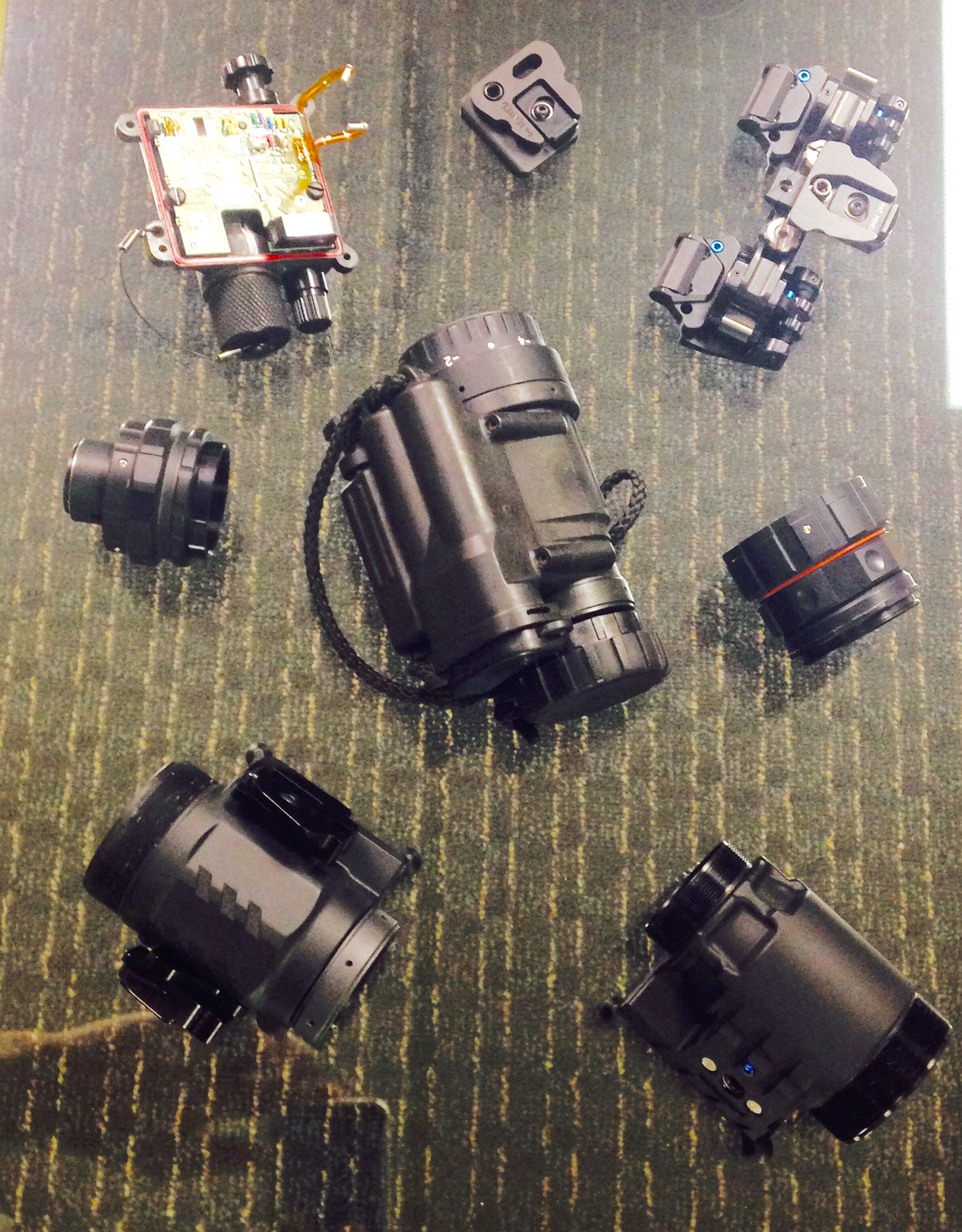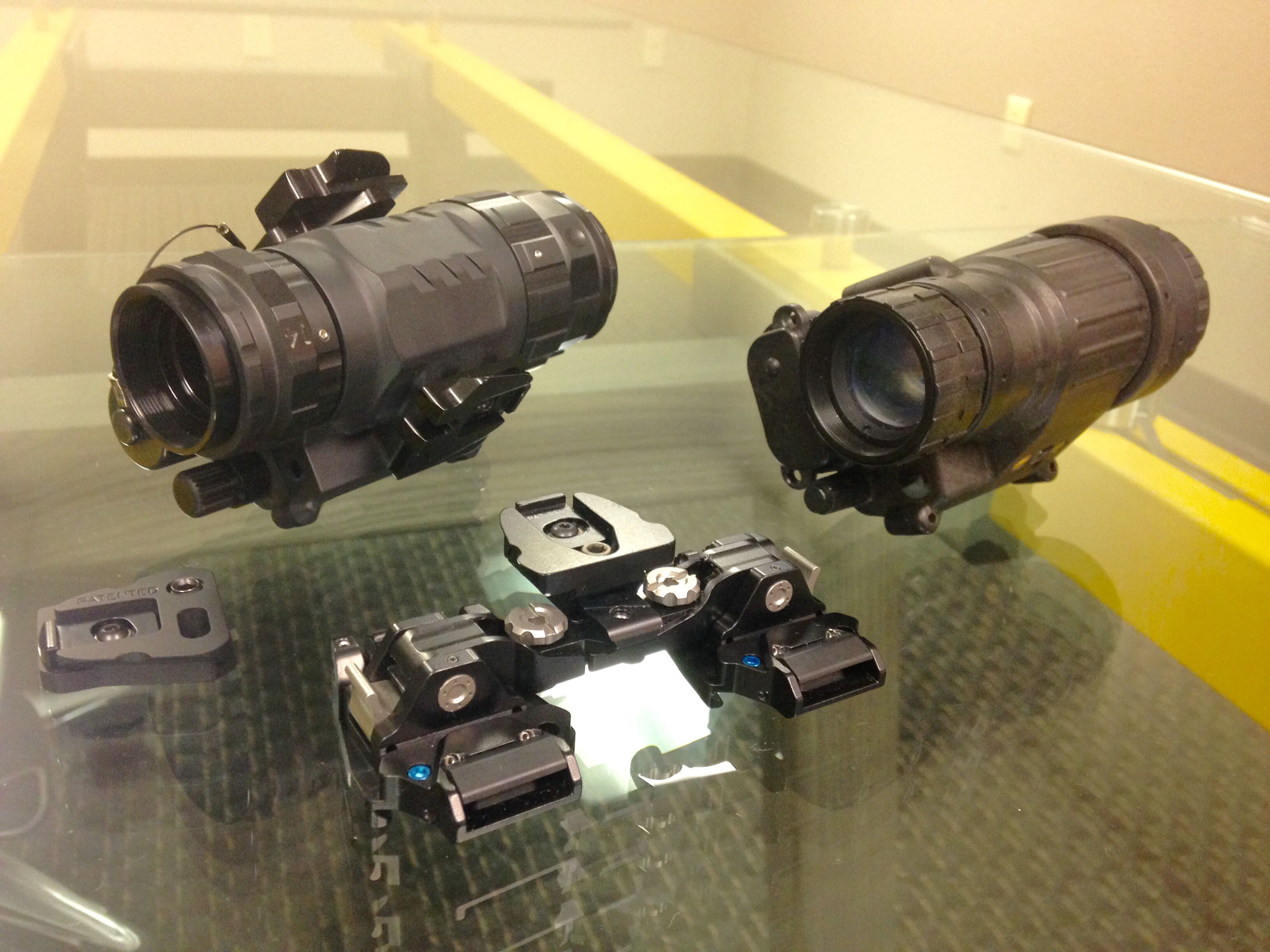Getting to this point in the systematic evaluation of the legacy PVS-14 as a candidate device for update and augmentation going forward (aside from the surface modification), several of the known and largely unknown areas of improvements are noted for those whom focus on the device more than the average user.
Upgrades to the Hyper 14TM configuration include:
– Denser and smaller OD front windows. These are know to crack or leak due to age or warpage of the chassis itself.
– Custom designed battery module gasket in lieu of a thin o-ring. In many cases the standard o-ring does not fully make contact with or even touch the lip of the mating part.
– Fully heli-coiled surfaces to a toleranced hole. In many legacy devices the standard housing makes due with a plastic thread. The steel screw makes quick fodder of the plastic mating surface.
– Use of a patented Burke Ring, which allows the device to be disassembled or undergo maintenance without removing the entire electronic housing or image tube to replace or upgrade optics.
– Obverse interface. This addition allows the monocular to have 2 interface surfaces versus the one standard 1/4″-20 thread.
– Ruggedized Collar. If used, this titanium collar replaces the standard plastic or aluminum Objective Focus Stop Ring. As a note, some manufactures have altogether eliminated this part and mold a faux stop ring into the legacy chassis. This ruggedized replacement part now adds yet a third interface point as an orbital anchor point. Typical uses are aftermarket weapon mounts, COTI/COSI/CORI clip-on devices and dual bridge type applications.
– Shock resistance. This particular Hyper 14TM is equipped with a (patented) multi-part sleeve system that significantly dampens shock and pulse problematics. This may open up the co-use of typically problematic calibers or weapon types that put optics in the permanent OFF mode.
Many of the criteria (modularity, ruggedization, logistical easement, scalability, etc.) are already available or open the possibility of these improvements. Since many of these items are internal and not readily viewable with a functioning device, the next discussion point that does provide direct critique-interface modularity.
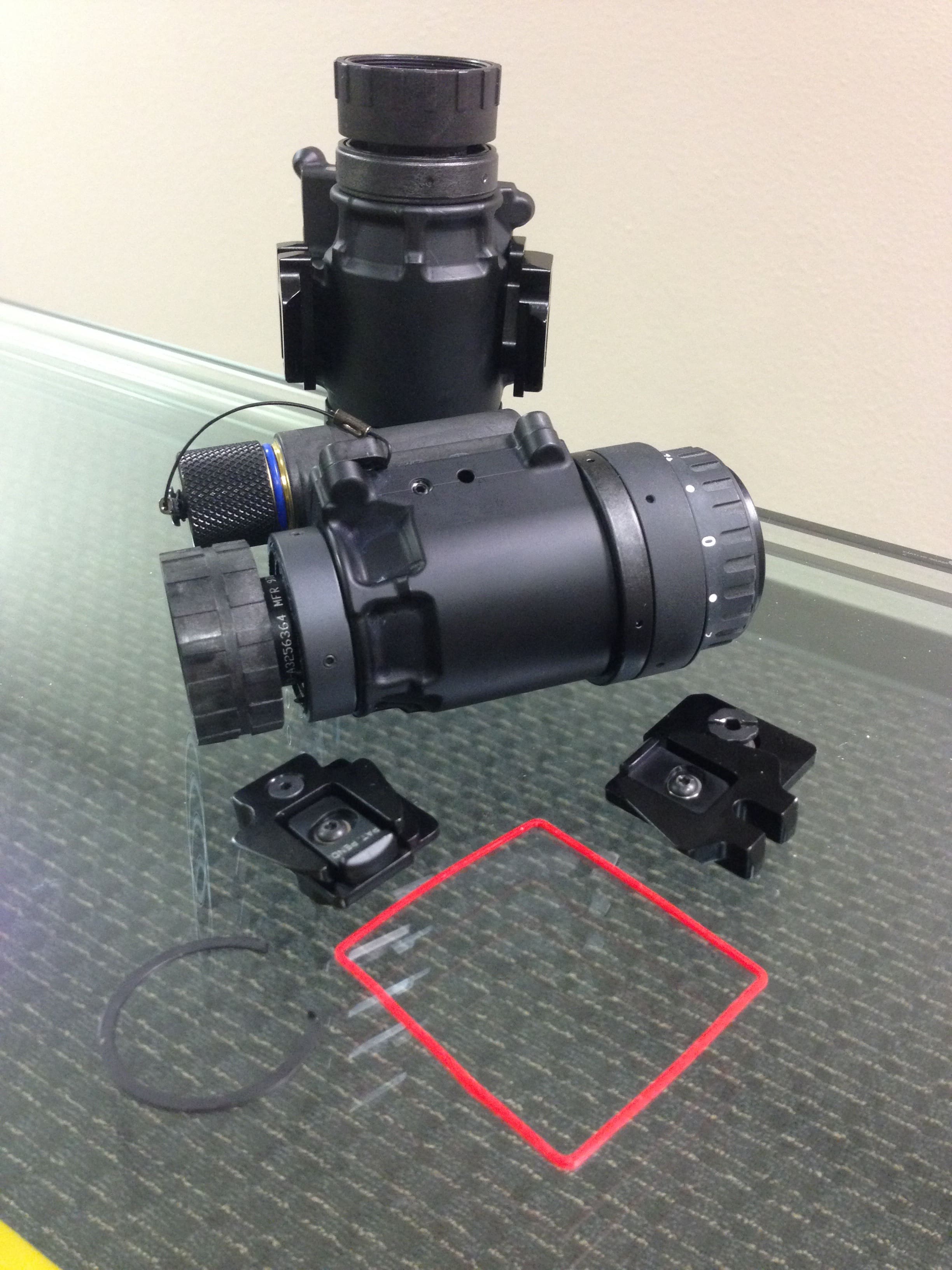
As you can see, the Hyper 14TM can be configured with either or both interface shoes in place. These can be added as needed for dovetail style interface as either/or, or as a set for whatever options the user chooses as a relative component(s).
These allow cross use with currently fielded digital weapon sight mounts, magnifiers, other non-relative interface equipment or forthcoming modular hardware. They can also be hastily removed to retain full use of the legacy PVS-14 family of parts such as the J-Arm and issue style weapon mount (since those parts probably cost equal or more than the new chassis, you may want to maintain them).
Night Vision Redux is a weekly series prepared with the assitance of DEP, the US subsidiary of Photonis. It is intended to educate readers about image intensification (I2) systems and ways they can be upgraded without having to purchase completely new systems.


